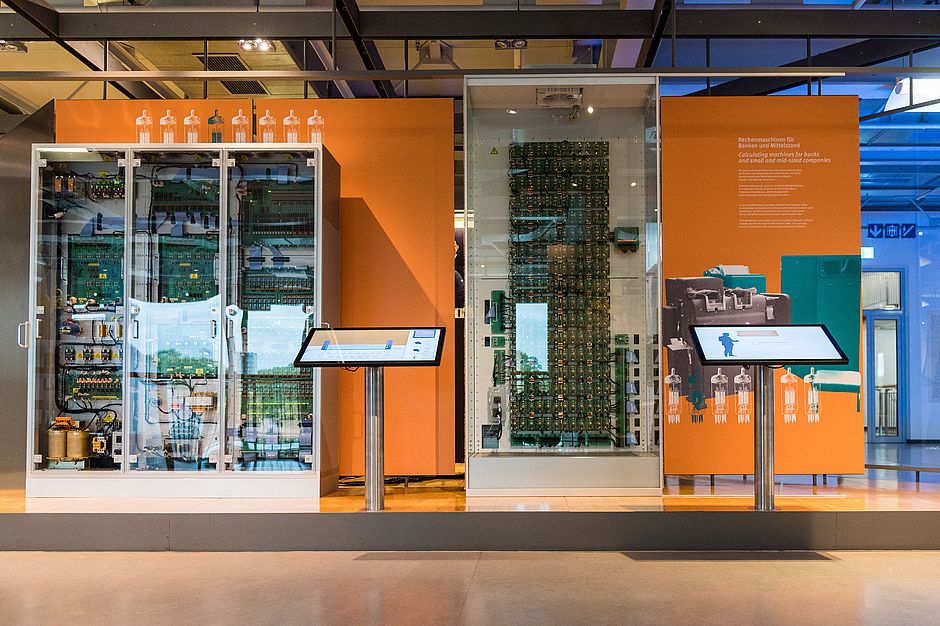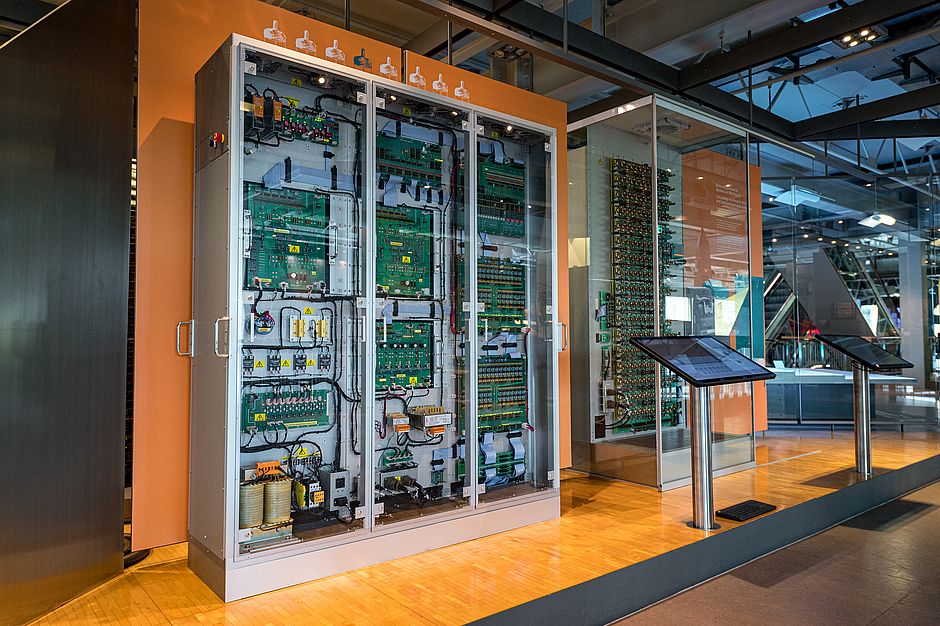The first calculating device launched in series production on the market by Heinz Nixdorf’s “Labor für Impulstechnik” in 1955 was the electronic calculating machine or balancer called ES 24. Nixdorf sold the balancer mainly to the French punched card system producer Bull, whose machines could be connected to the ES 24.
42,000 cards per hour
While a Bull punched card sorter sorted account movements from a workday that had been recorded on the punched cards, the amounts stored there were read out and sent to the balancer, which then added up the credits and debits from that day. With up to 42,000 cards per hour, the ES 24 was much faster than the usual electromechanical adding machines of that time, and at a price of DM 10,000, it was so inexpensive that it was affordable for smaller banks or small and mid-sized companies.
Vacuum tubes
The ES 24 had 396 E99CC vacuum tubes and therefore had the capacity to operate with 24 decimal places that could be grouped by the user as desired into multiple counters. The replica is based on Nixdorf’s original circuit diagrammes and was built in 2020/21 by the Berlin engineer Henry Westphal. He used 204 vacuum tubes of the same kind as the original, which gave it the capacity of 12 decimal places. With an elaborately constructed power supply unit and modern electronic components in the control logic, this replica of the balancer can be used daily in the museum and operated by visitors.
Media stations
Two interactive media stations invite visitors to explore the function and processing of the ES 24. They can make postings in a bank of the 1950s using punched cards or type in simple calculating tasks and watch the vacuum tubes determine the solution.




